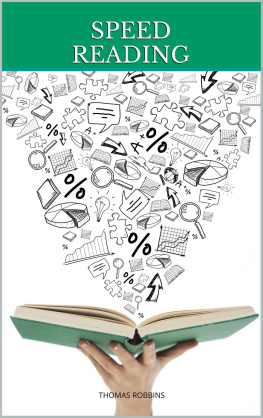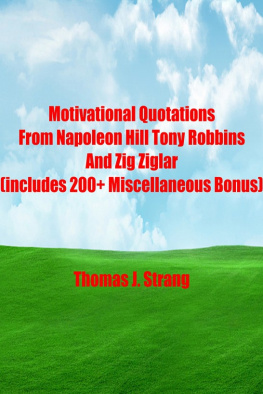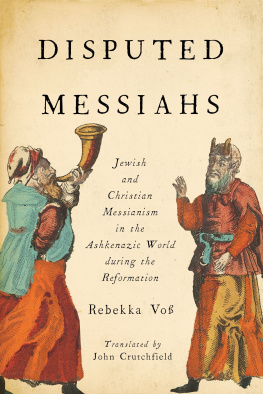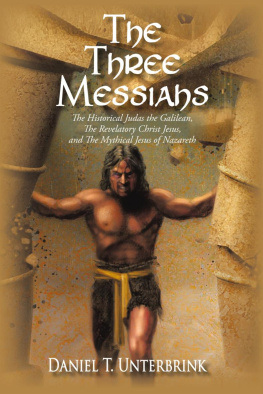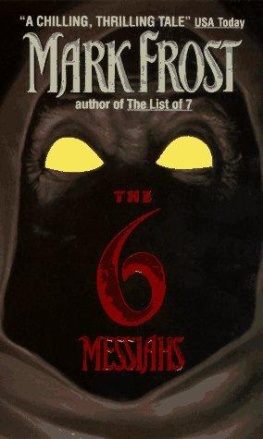Millennium, Messiahs,
and Mayhem
Contemporary Apocalyptic Movements
Edited by
Thomas Robbins and Susan J. Palmer
Routledge
New York and London
Published in 1997 by
Routledge
270 Madison Ave,
New York NY 10016
Published in Great Britain by
Routledge
2 Park Square, Milton Park,
Abingdon, Oxon, OX 14 4RN
Transferred to Digital Printing 2010
Copyright 1997 by Routledge.
All rights reserved. No part of this book may
be reprinted or reproduced or utilized in any
form or by any electronic, mechanical or other
means, now known or hereafter invented,
including photocopying and recording, or in
any information storage retrieval system, without
permission in writing from the publisher.
Library of Congress Cataloging-in-Publication Data
Millennium, messiahs, and mayhem: contemporary apocalyptic movements / edited by Thomas Robbins and Susan J. Palmer.
p. cm.
Includes bibliographical references and index.
ISBN 0-415-91648-8 (hb). - ISBN 0-415 91649-6 (pb)
1. Millennialism-North America-History-20th century. 2. End of the worldHistory of doctrines20th century. 3. ViolenceReligious aspectsHistory of doctrines20th century. 4. North AmericaReligion20th century. I. Robbins, Thomas. 1943-
II. Palmer, Susan J.
BL2520.M55 1997 97-12408
291.23-dc21 CIP
Publisher's Note
The publisher has gone to great lengths to ensure the quality of this reprint but points out that some imperfections in the original may be apparent.
To Nestlea, Demon Cat of the Apocalypse And to Susan's tribe
Contents
Thomas Robbins and Susan J. Palmer
David G. Bromley
Catherine Wessinger
James A. Aho
Robert W. Balch, John Domitrovich,
Barbara Lynn Mahnke, and Vanessa Morrison
Philip Lamy
Martha P. Lee
John M. Bozeman
Susan J. Palmer
Michael W. Cuneo
Anson Shupe
Ronald Lawson
Massimo Introvigne
Michael Barkun
Dick Anthony and Thomas Robbins
John R. Hall and Philip Schuyler
Mark R. Mullins
Acknowledgments
Aside from the editors and the contributors the person most responsible for the actual creation of this manuscript is Jean Peterson. Her work went far beyond mere clerical assistance and has entailed a major responsibility for standardizing contributors' technical formats and computer programs to meet the publisher's needs and manuscript guidelines. Ms. Peterson worked not only with the editors but on occasion dealt directly with several contributors and with the publisher.
The editors are deeply indebted to Marlie Wasserman, erstwhile editor for religion at Routledge, who recognized the potential of the volume proposed by the editors and had faith in the abilities and expertise of the latter. It was largely owing to the support and encouragement of Ms. Wasserman that the editors received a contract on the basis of a detailed prospectus. Marlie Wasserman was succeeded by Maureen MacGrogan, under whose general direction the actual manuscript was completed. The editors wish to give particular thanks to Laska Jimsen, assistant editor for religion at Routledge, with whom the editors have worked closely and upon whom we have relied for advice and for assistance in resolving certain issues.
The editors are indebted to Dr. David Bromley, who gave the editors useful advice and who helped bring the editors' project to the attention of Routledge. The editors acknowledge the helpful comments and criticisms directed to the original prospectus by Dr. E. Burke Rocheford, Dr. Paula Nesbitt, and Dr. Catherine Wessinger.
Patterns of Contemporary Apocalypticism in North America
Introduction
Thomas Robbins, Susan J. Palmer
It was once a common view of historians that as the year A.D. 1000 100 med, a wave of terror swept over Europe as the coming of Antichrist and the Last Judgment were anxiously awaited. It was, the great historian Jules Michelet asserted, a universal belief in the Middle Ages that the world would end with the year 1000 from the Nativity (quoted in O'Brian 1994, 6). Richard Erdoes (1988, 2) writes in AD 1000:
Some were certain that the Second Coming of Christ would fall on the last day of the year 999, at the very stroke of midnight. Others were equally convinced that Armageddon would come a little earlier, on the eve of the nativity when the Children of Light would join in battle with Gog's army of hellish fiends. Some fixed the date on the day of the summer or winter solstice of the thousandth year after our Lord's passion though people quarreled about the exact date and hour, they all agreed, in the words of [the monk] Raoul Glaber that Satan will soon be unleashed because the thousand years have been completed.
Some recent historians have challenged this notion. They believe that the supposed millennial terrors of the year 1000 have been exaggerated by earlier writers extrapolating a handful of apocalyptic terror texts (McGinn 1994).1 Nevertheless, as one revisionist notes, Historical fables like the Terrors of the Year 1000 have a way of reproducing themselves as real events. Thus, In all likelihood some will view the approaching year 2000 in terms of such foreboding, perhaps even fearing the imminence of Antichrist (McGinn 1994, xi).
In recent decades the millennial impetus to apocalyptic imagination has been reinforced by various provocative, earth shaking developments. Messianism is always associated with the presences of signs (Rapoport 1988, 200). Recent signs might include the astonishing collapse of the Soviet Evil Empire, the terrifying specter of global epidemics such as AIDS;2 warnings by scientists about imminent climactic and ecological disaster; genocidal horrors in countries such as Cambodia in the 1970s or Rwanda in the 1990s; the development of advanced weapons and the threat of nuclear holocaust the breakdown of the family and disorienting flux in gender roles and norms of sexual intimacy; the growth of violent crime; the rapid rise of computer technology; global techno-economic integration; the resurgence of militant Islam; the growth of spiritual pluralism and occultism; the founding, expansion, and continuing peril of the Zionist state of Israel; and the prospect of a united Western Europe. Each of these developments has either been cited by scholars and journalists as helping to stimulate apocalyptic visions or has been identified by Christian prophecy writers such as Hal Lindsey (e.g., 1973a, 1973b, 1981) as representing a significant portent of the approaching last days.
An example of the attribution of apocalyptic religious meanings to the economic trends of recent decades is afforded by Hal Lindsey's identification of the emerging techno-finance infrastructure of global economic integration as foreshadowing the looming reign of Antichrist (or the Great Tribulation). In this period, Antichrist will require that all men on Earth worship him as God and those who refuse to profess this allegiance by receiving the Antichrist's identifying mark [666] on their forehead or hand will be prohibited from buying or selling:




